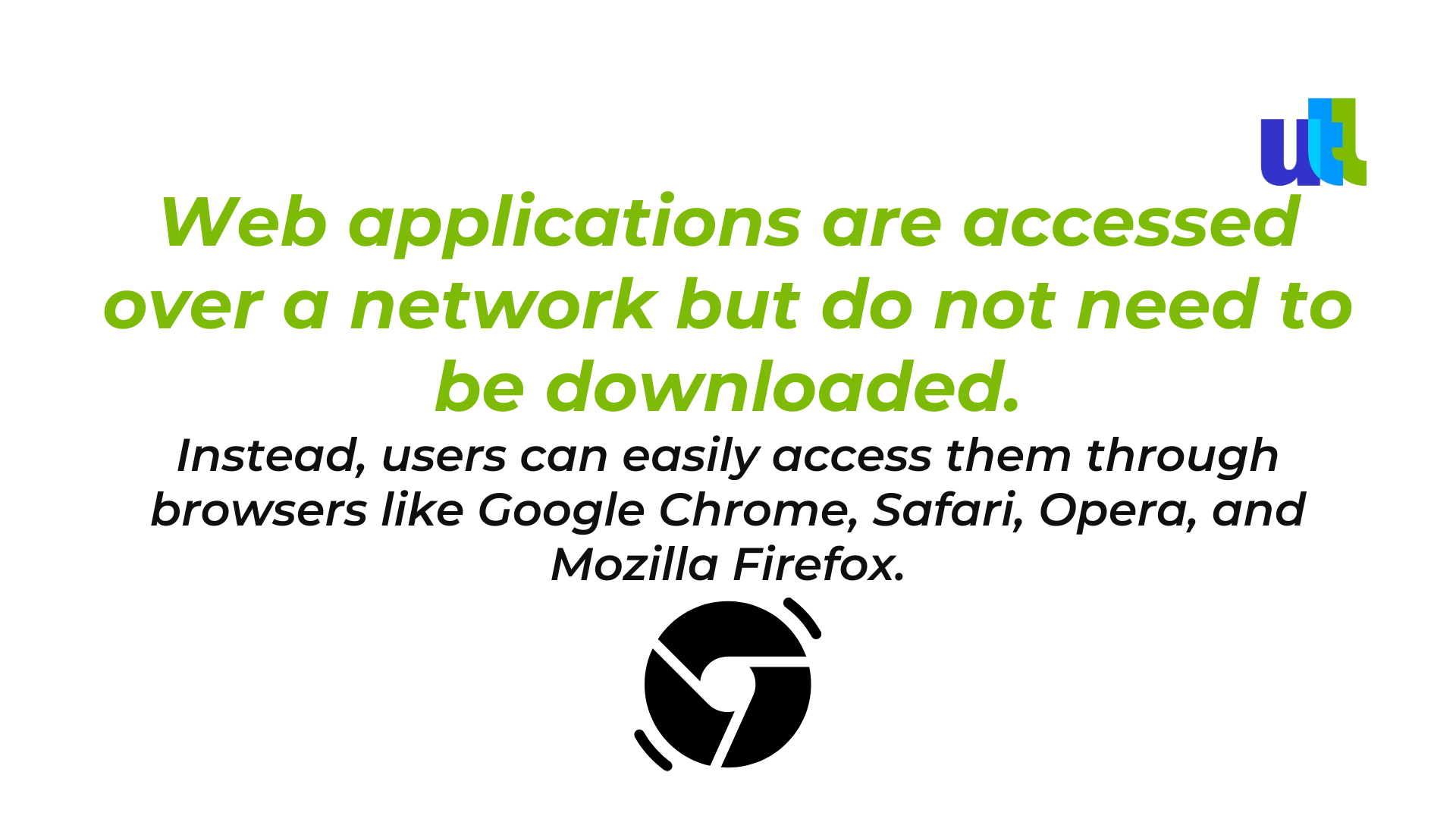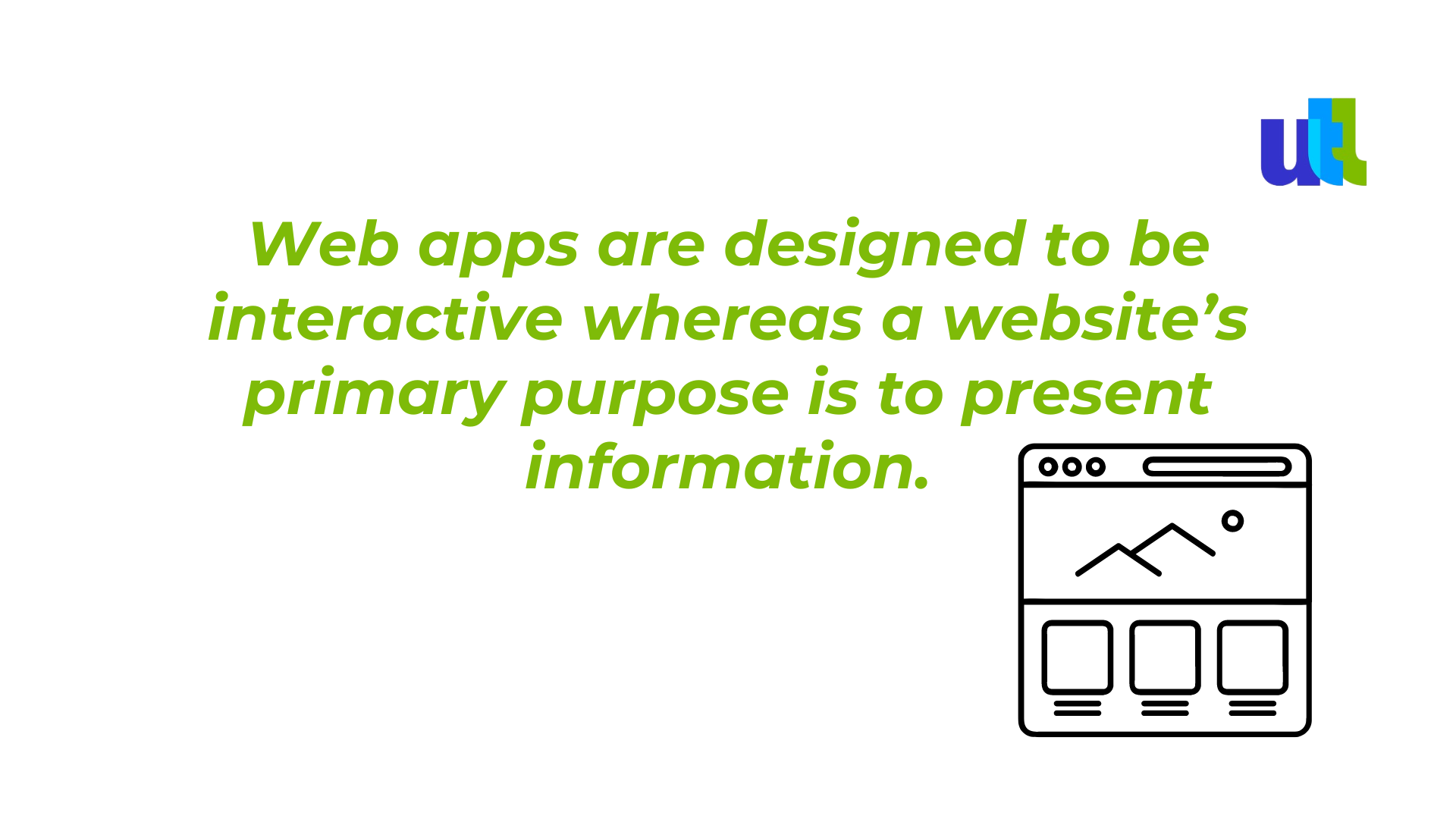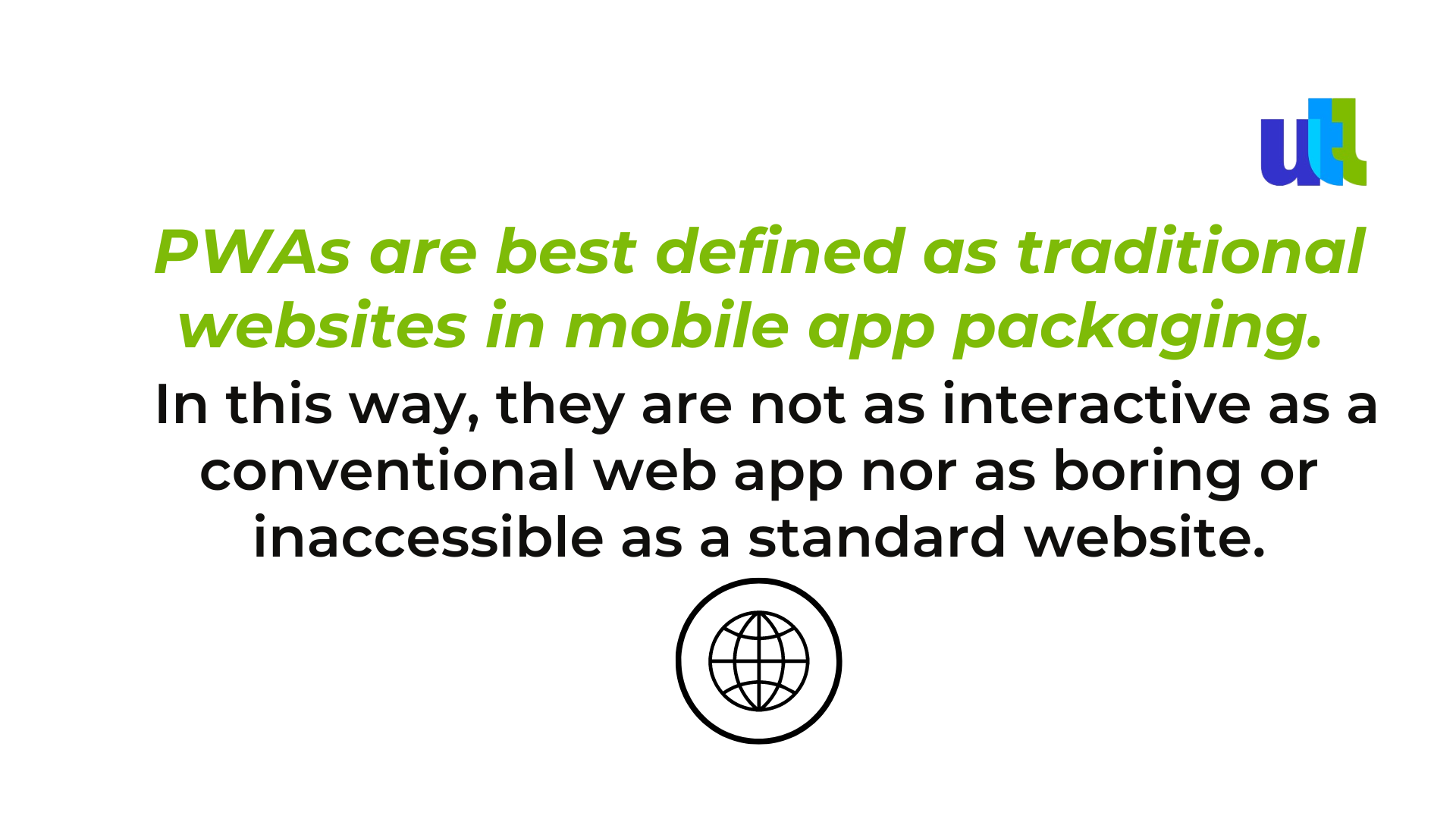To find out more about web applications - from their advantages and disadvantages to the frameworks you should use to put them together — keep reading!
Web application development empowers web-based projects to perform and act similarly to a mobile app. Web apps engage users and prioritize responsive interactions, while being still delivered through the internet over a network.
You could think that web app development is the posterity of web development. But let us tell you this: while web development and web app development share some similarities, web app development is much more dynamic. Knowing the difference will help you understand what both have to offer for your business.
Both enterprises and individuals develop web applications to fulfill different purposes. Web apps help integrate the tailored experience of native apps with easy access from any device. Let’s take Facebook and LinkedIn as examples – their great web apps provide immersive and tailored experiences similar to their native apps directly from the browser.

How are web applications developed?
Web apps have the typical front-end and back-end web development technologies. Since web apps are closely related to websites, web app development, and web development share many characteristics.
On the front end, for instance, web app developers utilize JavaScript, CSS, and HTML. The back end for web apps might similarly use the same server-side languages for building websites such as Ruby or Python.
However, web apps operate on any device differently from any traditional website.

Traditional websites may have users who scroll or click to consume more information, enter an email address, or perhaps more personal information for online purchases.
But a web app optimizes the user experience (UX), so users can do much more. For example, you’ll notice that using Twitter or Instagram from a web browser is a more captivating experience than clicking on the website of your local sushi shop. That’s because the former are web apps, and the latter is a website.
What differentiates web apps from native and hybrid applications?
Native apps are mobile apps that are specifically built for the platforms they run on. That means developers must employ native technologies to use them: the Swift programming language for iOS, or the Java programming language for Android.
In essence, companies that build natively must develop different apps for different platforms, as each app will require a different codebase in its native language.
Hybrid app development provides a quicker solution. Hybrid apps take advantage of both native and web technologies and as a result, they offer multi-platform compatibility.
Web apps are neither of these things. Web app developers solely make use of web technologies. However, they place a certain focus on user interaction, just like a mobile app, and not like a traditional website at all.
What about Progressive web apps (PWAs)?
Progressive web apps (PWAs) are a modern type of web applications that furthermore combine desirable features of both native and hybrid apps.
As any web app should, PWAs can be opened in a web browser but after going through the classic download and install process that users expect with mobile apps.

What makes PWAs so alluring is their performance. Though it is important to keep in mind that PWAs do not intend to take on the mobile apps’ role.
What Are the Advantages and Disadvantages of web applications?
Web-based applications ultimately ease the development process, since businesses can give their users interactivity without spending the time and resources necessary for building a mobile application.
Still, weighing the cons and the pros is useful.
The pros of web application development:
- High portability
- Max convenience
- Easier and faster development
The cons:
- Reduced speed as compared to mobile apps
- Decreased access (impossible without an Internet connection)
- Limited functionality
It’s also important to mention that there are different types of web applications with different behaviors depending on how they’re built. While all these web application types still use similar web technologies they generally fall under the three categories:
1. Client-side web apps
The user interface (UI) is the focus of this type. They tend to bring users high-performance levels.
As a result of client-side rendering, there is little or no buffering time for loading a page, high speeds of interactions with content, and great responsiveness.
2. Server-side web apps
This type of web app is synonymous with back-end development: it is composed of building the databases, servers, application programming interfaces (APIs), and any other background processes that occur in an application.
They work well with static content as it can take some time for the web browser to send a request to the server and receive an answer. Still, server-side web apps are normally more secure and offer more browser compatibility than client-side web apps.
3. Single-page apps
A single-page application (SPA) differs from a traditional multi-page application as it has the desirable advantages of both client-side apps and server-side apps.
Even though server-side rendering holds associations with long wait times, JavaScript frameworks like React, Vue.js, and Angular use dynamic routing to load only the data that is necessary at any given time. Thus, in a single-page app, you do not need to reload the entire page to execute an action or fetch new data.
Let’s go deeper into the web apps development process
For full-stack web app development, you will need the right front-end and back-end tools explained below.
Front-end
- JavaScript
The old well-known JavaScript is the principal client-side programming language for any type of web development. Nearly 100% of web developers use JavaScript for coding client-side behavior.
- HTML
HyperText Markup Language (HTML) is responsible for structuring the content of a web page. Its elements describe to a web page how to display text, images, audio, and video. HTML elements are highly recognizable by the “<” and “>”.
- CSS
Cascading Style Scripts (CSS) is used for denoting the presentation of a web page. Just like the previous two technologies, it is a foundation technology.
Colors, layouts, and fonts are some of the integral characteristics that CSS invokes.
Back-end
Back-end development comprises several components such as server-side programming, databases, web servers, and APIs.
- Programming languages
Server-side or back-end programming languages must handle the functionality of a web app that takes place behind the scenes, send and receive data from one end to the other, manage user connections and security authentications, and empower the web application to perform as it should.
Java, Python, Ruby, and PHP are some of the most popular ones.
- Databases
Databases are responsible for storing the data of an application.
Structured Query Language (SQL) is the go-to query language that has many extensions and related versions extending additional functionality like MySQL, PostgreSQL, and Oracle.
- Servers
Servers respond to network requests by retrieving information based on client requests and serving them.
There isn’t a specific language for servers, but all of the technologies that make up back-end development should work well with the connected servers.
Apache, Nginx, and Internet Information Services (IIS) are some of the most-known ones.
- APIs
APIs facilitate connections between two or more software systems. It is an API integration that offers you to pay with PayPal from the eBay website.
Developers create APIs without domain-specific language. They use other back-end technologies and share them publicly with other developers (or, in case of organizations, keep them private).
Web application development is not much different from any other software development life cycle. A great team and well-defined procedures are all you need for successful development.
Conclusions
A web app is different from what you’d expect from a website or a mobile app. You’re probably already very much in the know about several prominent web apps, such as Google Docs and Salesforce.
There are several types of web apps: client-side web apps, server-side web apps, and even single-page applications. All of them are built using a combination of front-end and back-end technologies.
Want to make your web app? Contact our web app developers in Utah today to hire qualified and skilled experts.
For free consultation about web app development click here.
----------------------------------------------------------------------------------------------
View the full presentation:
WRITTEN BY
Sofia Kutko
2023-05-30














































































































































































